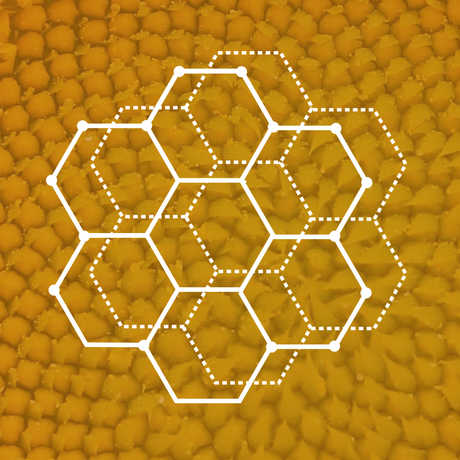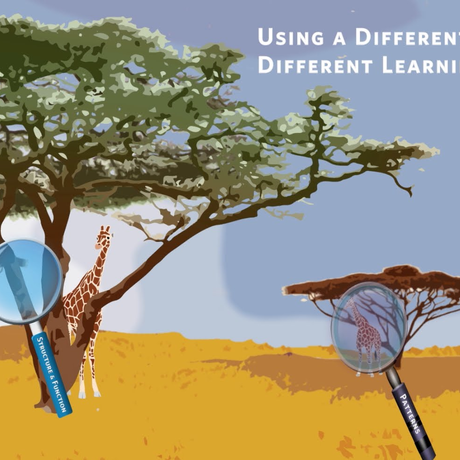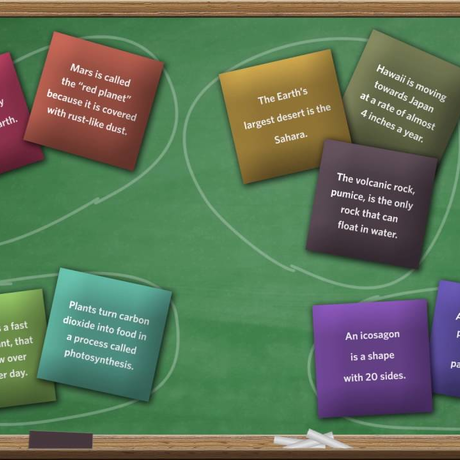
The idea of standards including both content and practices is not necessarily new. However, the added dimension of the Crosscutting Concepts (CCCs) takes more getting used to, and educators often have more questions about this dimension. They may wonder why it is on equal footing with the other two dimensions, how it fits in with the other two dimensions, and why it is important to students.
This presentation introduces the CCCs and their rationale through a story about research done with expert and novice chess players. The results of the research points to fundamental differences in how these two groups organize information. Participants are then given a chance to share their first impressions of the CCCs before diving deeper into other activities.
Watch the video above to get an overview, and use the detailed lesson plan below to lead this professional development activity for your team of educators.
Learning Goals
Participants in the activity will
- understand where the Crosscutting Concepts (CCCs) come from
- understand that students can use the CCCs as a conceptual framework for organizing new information
- be introduced the titles of the seven CCCs
Approximate time
15 minutes
- Part 1: The Chess Story (10 minutes – slides)
- Part 2: Discussion (5 minutes – whole group)
Prepare
- Review the presentation notes in this lesson and the accompanying slides. This is not intended to be a script, so adapt the discussion points to your own presentation style.
Background for Facilitators
The idea of standards including both content and practices is not necessarily new. However, the added dimension of the Crosscutting Concepts (CCCs) takes more getting used to, and educators often have more questions about this dimension. Specifically they may wonder why it is on equal footing with the Science and Engineering Practices (SEPs) and Disciplinary Core Ideas (DCIs). Educators also often wonder how the CCCs fit in with the other two dimensions, and why they are important to students. For this reason, we recommend using the presentation to introduce the CCCs before diving into hands-on activities to develop a deeper understanding of the definitions and applications of the seven concepts.
This presentation centers around a science story that helps define the idea of a conceptual framework by comparing the ways that experts and novices organize information. The story goes like this: In a series of cognitive psychology studies, researchers looked at how chess experts and chess novices differed in the way that they organized their ideas about the game. As part of this research, chess experts and novices were shown a chess board on which pieces were randomly arranged (see the image above). Both groups were then asked to recreate the positions of the pieces from memory.
It turns out that the two groups organized the information differently. Novices tended to remember only individual pieces (rook, knight, bishop, etc.) and their position in space. Experts, however, grouped pieces together based on the strategic moves that the piece could make in the game. (See SLIDE 8 for a visual representation of this.) The experts could then use this conceptual framework to organize and make sense of any configuration of pieces on the board. This phenomenon has been observed in other areas like physics and computer programming. In general, novices rely on surface features (e.g. isolated facts or formulas) to organize ideas, while experts develop and use a conceptual framework, sorting new knowledge using big ideas or broad categories.
We can help students think like experts by providing them with a conceptual framework around which they can build their understanding and new ideas. The CCCs as a conceptual framework aim to help students learn science and think like experts in the following ways:
- Help students make sense of new content and tackle novel problems
- Allow students to be more flexible and creative with their science and engineering ideas
- Help students to develop their ideas over time
The conceptual framework of the CCCs supports students in thinking scientifically. Students don’t necessarily need to be science experts—instead we want to teach them how to critically evaluate their world.
References
Aranda, J. (2006, August 29). Fun with representations III—Hidden in plain sight [Web log post]. Retrieved from https://catenary.wordpress.com/2006/08/29/fun-with-representations-iii-hidden-in-plain-sight/
Sheridan, H. & Reingold, E.M. (2014). Expert vs. novice differences in the detection of relevant information during a chess game: evidence from eye movements. Frontiers in Psychology, 5, 941. http://doi.org/10.3389/fpsyg.2014.00941
Procedure
This activity consists of a PowerPoint presentation. Try to make this an interactive presentation, drawing questions, comments, and input from your participants. The notes below describe our talking points for each slide in the presentation. Please do not view this as a script; rather, adapt the talking points to your own presentation style.
Note: to view these talking points alongside the slides, download the full activity.
Part 1: The Chess Story (10 minutes)
SLIDES 1-4: Introduction
- If you have been using the cake analogy, return to it here to highlight that this is an introduction to a new dimension: The Crosscutting Concepts (CCCs) are represented by the frosting
- You can review this analogy in the Introduction to the NGSS presentation.
SLIDE 5: Why the CCCs?
- The Science and Engineering Practices (SEPs) and the Disciplinary Core Ideas (DCIs) are similar to how we have thought of science education in the past: content along with investigation and experimentation.
- The CCCs as a third dimension on equal footing with the SEPs and DCIs may seem very new.
- This presentation is meant to give some background about the inclusion and importance of the CCCs, and hopefully get you excited about bringing them into your classroom.
SLIDE 6: Experts vs. Novices
- Research in cognitive psychology makes a key distinction between the ways that experts and novices organize their ideas.
- Read slide
SLIDE 7: The Experiment
- In one experiment, two groups of chess players were shown pieces randomly arranged on a chess board.
- One group of players were novices in the game.
- The other group of players were experts.
- The players were asked to recreate the arrangement of pieces on the board from memory.
- Ask the participants: What do you think happened? How do you think these two groups solved the problem differently?
- Allow participants to share ideas.
SLIDE 8: The Results
- The research revealed clear differences in how these two groups organized information about the chess pieces.
- Novices remembered the locations of individual pieces
- Experts grouped pieces based on the strategic moves that the pieces could make (Draw participants’ attention to the color key that describes one way of organizing this information).
- Similar results have been found in other fields—besides the game of chess—including computer programming and physics.
SLIDE 9: Connecting to Science Education
- We can help students to learn to think like experts by providing them with a conceptual framework around which to organize their own ideas and understanding.
SLIDE 10: Science Learning
- Specifically, the CCCs as a conceptual framework will help students learn science in these ways.
- Read the three listed ways. Pause for questions before moving on.
SLIDE 11: What are the 7 CCCs?
- Leave this slide up for the duration of the short concluding discussion.
Part 2: Discussion (5 minutes)
The goal of this short wrap-up discussion is to share first impressions of the 7 CCCs now that participants are aware of the rationale behind them.
- Tell participants that the 7 titles listed are the 7 Crosscutting Concepts that define the framework in the NGSS.
- Give participants a moment to read through the 7 titles, to notice, and to wonder.
- What are your first impressions? What do you notice and what do you wonder?
- Are these concepts truly “crosscutting” across science subjects?
- This can be a time for participants to simply share their impressions, keeping in mind that they will have a chance to dive more deeply into the thinking behind each of these 7 concepts by reading Appendix G of the NGSS, and participating in more activities exploring this dimension of the standards.
- Do you see connections that could be made to other subjects, outside of science?
- Participants often share that some of the CCCs seem very strictly science, with little connection to other disciplines (e.g. Energy and Matter), while others (e.g. Patterns, Cause and Effect) have obvious overlap with Language Arts, Math, or other disciplines.

NGSS Demystified
This training toolkit will prepare you to lead PD for other educators.
Browse all of the videos at once.

